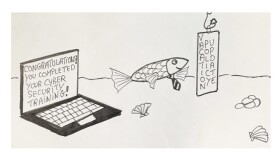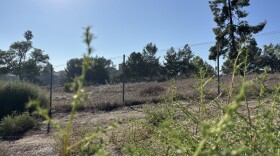New York City has removed a statue of J. Marion Sims, a 19th-century gynecologist who experimented on enslaved women, from a pedestal in Central Park.
The statue will be moved to a cemetery in Brooklyn where Sims, sometimes called the "father of gynecology," is buried. A new informational plaque will be added both to the empty pedestal and the relocated statue, and the city is commissioning new artwork to reflect the issues raised by Sims' legacy.
The 1890s statue was installed across the street from the New York Academy of Medicine in 1934, with a plaque praising Sims' "brilliant achievement." Sims perfected a technique to repair vesicovaginal fistulas, which are holes between the vagina and the bladder or rectum, by repeatedly conducting painful experimental surgeries on enslaved black women without using anesthesia.
In January, a mayoral commission examining controversial monuments in New York City overwhelmingly recommended that the Sims statue be relocated. Mayor Bill de Blasio agreed.
The Public Design Commission approved the decision unanimously on Monday, and less than a day later, the statue came down.
A small crowd watched and cheered, New York Daily News reports, with one spectator calling out, "Off with his head!"
Harlem resident Mercy Wellington spoke to the Daily News about watching the statue come down.
"I feel that my ancestors can rest," she told the newspaper.
"Each day I walked past that statue and I saw him up there, I felt personally disrespected. ... It's a historical moment for me, and it's an emotional moment. I just feel the right thing is being done."
Vanessa Northington Gamble, a physician and medical historian at George Washington University, spoke to NPR's Hidden Brain podcast in 2016 for an episode about Sims' legacy.
She explained that in the 1840s, to develop a treatment for fistulas, Sims spent years experimenting on enslaved women without using anesthesia. He conducted surgeries on a number of women, but we only know the names of three of them: Anarcha, Lucy and Betsey.
"These women were property," Gamble says. "These women could not consent. These women also had value to the slaveholders for production and reproduction — how much work they could do in the field, how many enslaved children they could produce. And by having these fistulas, they could not continue with childbirth and also have difficulty working."
The surgeries, which were repeated again and again on the same women, were painful; Sims described Lucy crying and saying she felt like she would die. Sims also says the women wanted the surgeries because they wanted to be cured. As Gamble notes, we only have his word for that.
After perfecting the technique on black women, without anesthesia, Sims went on to offer it to white women. "But he treated white women with anesthesia," Gamble notes.
This 19th-century history is echoed in contemporary medical practice, Hidden Brain notes: "Black patients continue to receive less pain medication for broken bones and cancer. Black children receive less pain medication that white children for appendicitis. One reason for this is that many people inaccurately believe that blacks literally have thicker skin than whites and experience less pain."
And, in America today, black women are far more likely to die during pregnancy or childbirth than white women are.
Poet Bettina Judd drew on her own experience, as a black woman who saw doctors dismiss her pain as she endured an agonizing ovarian torsion, as she reflected on the experiences of Lucy, Betsey and Anarcha.
She shared several poems with Hidden Brain, including "Betsey Invents the Speculum":
"Introducing the bent handle of the spoon I saw everything, as no man had ever seen before" — from The Story of My Life by J. Marion Sims
I have bent in other waysto open the body make space ... Sims invents the speculumI invent the wincing the if you must of itthe looking away the here of discovery.
The "distressing imbalance in power" between Sims and the enslaved women played a key role in the New York City mayoral commission's recommendation to remove the statue.
The group considered more than 800 other monuments, statues and markers; the Sims is the only one it overwhelmingly advised relocating.
The commission laid out its reasoning in a lengthy report. It emphasized that a reckoning with history means not just removing controversial statues, but also adding "representation of overlooked histories." In some cases, monuments could be improved by "re-contextualization" to provide more information about the historical figure depicted.
But in the case of the Sims statue, the commission overwhelmingly urged taking it down from its literal pedestal — and commissioning another type of monument, such as one dedicated to women of color in science and medicine.
"There is no question about the abuse of the women he experimented on," the commission wrote. And yet, in the statue's pose and the adulatory prose on its plaque, "there is no ambiguity to the monument's glorification."
In addition, "the surrounding neighborhood of East Harlem/El Barrio largely consists of communities of color" that have been asking that the statue be taken down for decades, the commission noted.
In addition to the monument in New York, Sims is memorialized with statues in South Carolina and in Montgomery, Ala.
Copyright 2018 NPR. To see more, visit http://www.npr.org/.






